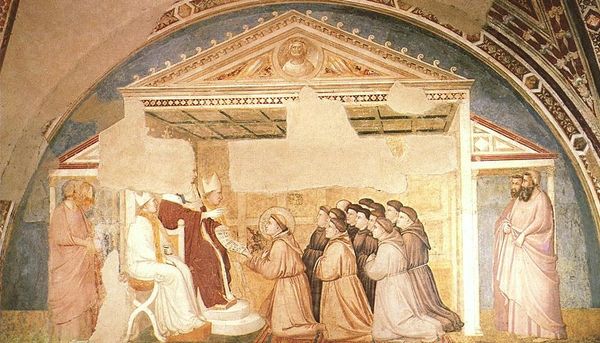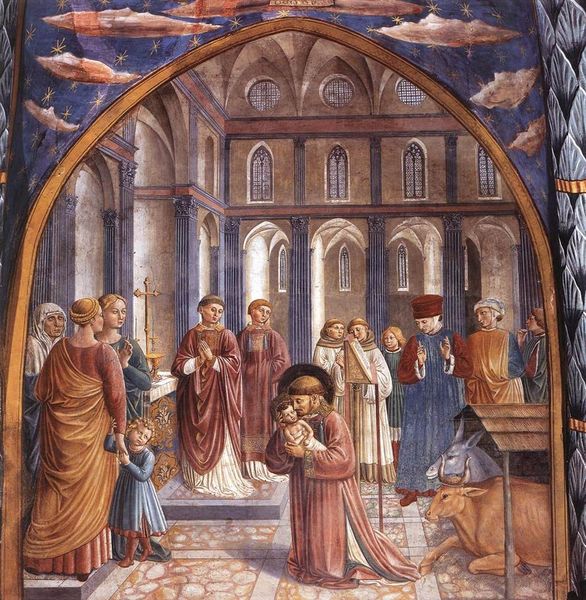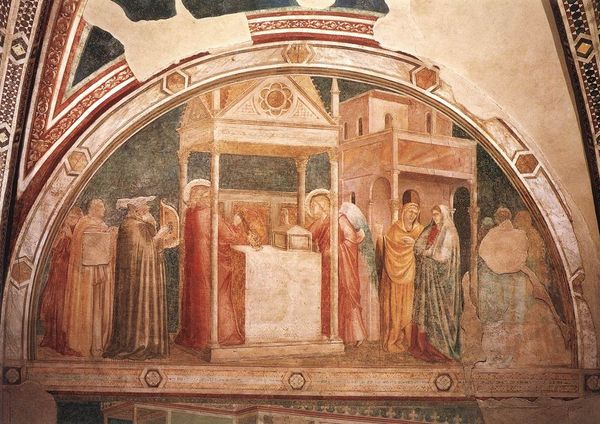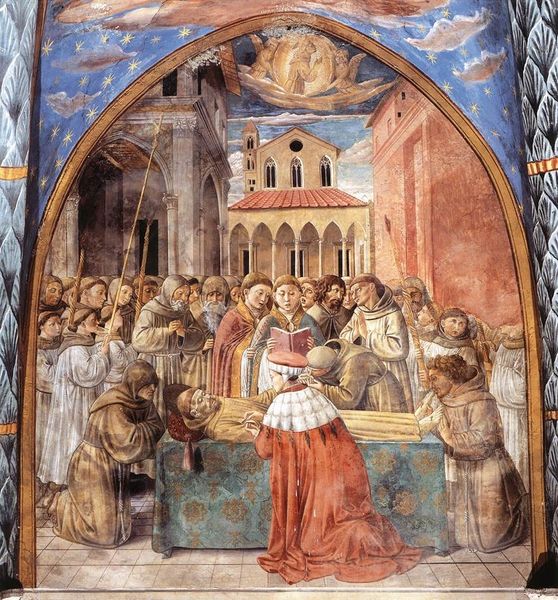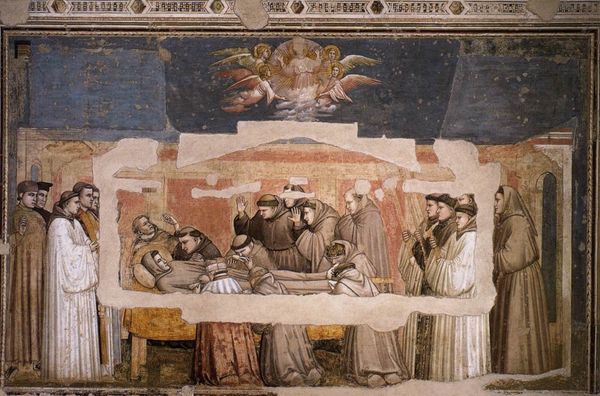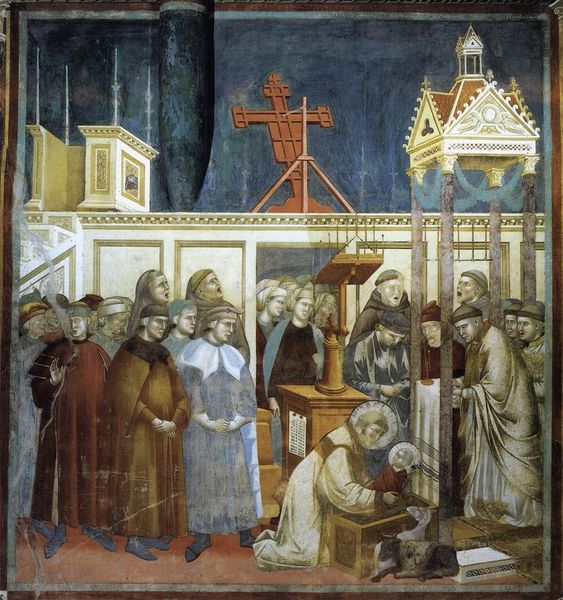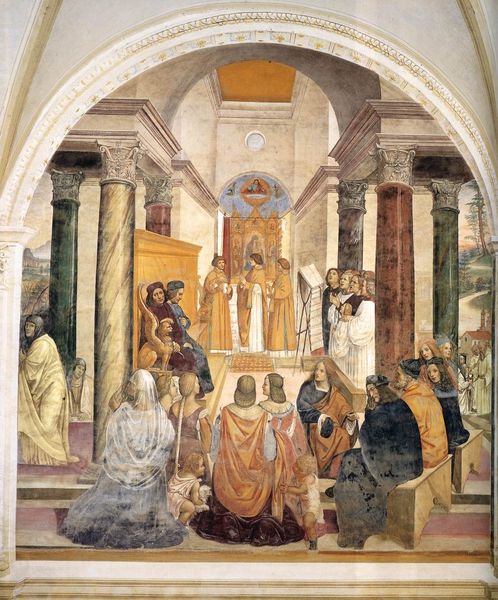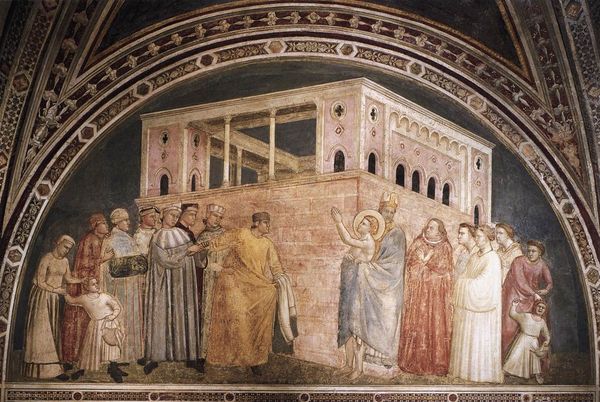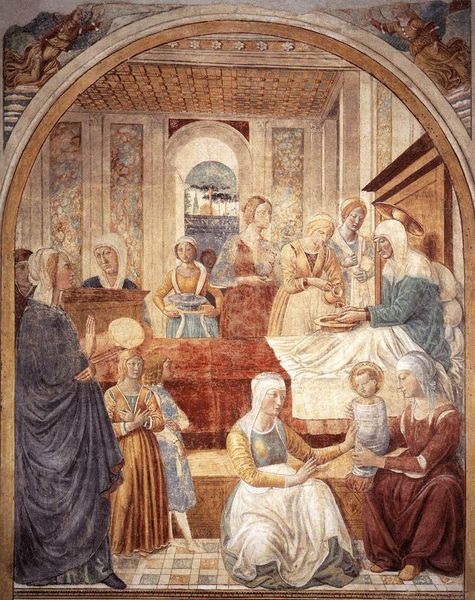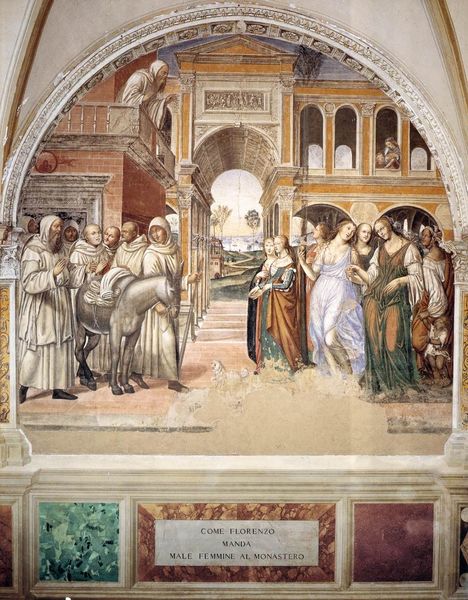
painting, fresco
#
medieval
#
narrative-art
#
painting
#
sculpture
#
holy-places
#
figuration
#
fresco
#
traditional architecture
#
christianity
#
painting painterly
#
history-painting
#
italian-renaissance
#
historical building
Copyright: Public domain
Curator: Editor: Here we have Giotto’s “Raising of the Boy in Sessa,” a fresco from about 1320. It’s a fascinating scene – lots of people, architectural details… but I am struck by the division between the earthly plane, filled with figures, and the celestial, expressed via architectural composition and golden halos. How should we interpret this, given that this a religious fresco, made using simple materials in an elaborate technique? Curator: Let's consider the fresco technique itself. Giotto wasn't just painting; he was involved in a material process deeply embedded in the socio-economic context of 14th-century Italy. The fresco wasn't mere decoration; it was labor. Think about the sourcing of pigments, the preparation of the wall, the labor to grind and mix the colors. Each step has materiality as part of its expression and its reception. Editor: I hadn’t thought about the materiality so directly. So, instead of purely symbolic readings, should we look at who made the work, under what conditions, and how these physical realities impacted the art’s final appearance? Curator: Precisely. For instance, look at the blue pigment, likely ultramarine made from lapis lazuli – sourced from Afghanistan. Its presence signifies not just heaven but also access to trade networks, economic power of patrons and Giotto's workshop. How does this context influence our appreciation of the narrative? Editor: That is a very interesting material reality to take into consideration. The process also seems crucial – fresco requires speed and precision, direct application, influencing Giotto's style and choice of colors! What do you make of the viewer of the artwork and its setting for the experience of it? Curator: Indeed! Also, consider that viewing happened in a specific place— a religious structure, built with contributed materials to host the works in service to its congregation, and thereby embedding them within their faith. That combination of economic activity with manual craft is inseparable from the content and effect on an individual's experience. Editor: This way of seeing shifts everything. I guess the message comes not just from the divine but from all the earthly elements as well, embedded through a technique into Giotto's lines! Curator: Exactly. Appreciating the fresco involves comprehending this network, where economic forces and workshop practices molded artistic representation and religious belief.
Comments
No comments
Be the first to comment and join the conversation on the ultimate creative platform.


